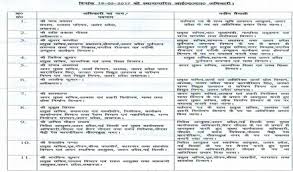Understanding IAS Transfers: Latest Updates and Significance

Introduction
The Indian Administrative Service (IAS) plays a crucial role in the nation’s governance, and the transfer of IAS officers holds significant importance for both administrative efficiency and public service delivery. Understanding the current trends and underlying reasons for these transfers is essential for citizens, stakeholders, and aspiring bureaucrats alike.
The Current Landscape of IAS Transfers
As of 2023, the government has initiated various transfers of IAS officers across states aimed at reshuffling the bureaucratic setup to enhance governance effectiveness. In March 2023 alone, approximately 150 IAS officers were transferred across multiple states in a bid to address regional challenges, improve administrative responsiveness and renew officer roles periodically.
Experts suggest that these transfers often occur after the completion of significant projects or during administrative reshuffles aimed at introducing fresh perspectives in various governmental departments. Recently, transfers have also been influenced by rising public demands and increased political accountability, reflecting the changing landscape of governance in India.
Implications of IAS Transfers
The impact of these transfers is twofold. On one hand, these changes can reinvigorate administrative functions as new officers bring different insights and strategies. Conversely, frequent transfers may disrupt ongoing projects or create instability within departments. Additionally, with regard to governance, the efficiency and performance of public services are closely linked to the stability and experience of the officers in those roles.
Future Outlook
Looking ahead, the trend of IAS transfers is likely to continue evolving. The government may increasingly rely on data-driven methods to identify areas requiring intervention and assign officers accordingly. This approach could further enhance the effectiveness of public administration in India.
For aspiring IAS candidates, understanding the dynamics of transfers can be crucial in shaping their career trajectories. Officers are encouraged to be versatile and prepared for changes, as adaptability remains key in a constantly shifting administrative landscape.
Conclusion
In conclusion, while IAS transfers are a common administrative practice, their implications are profound and can affect the quality of governance. As the government continues to navigate complex challenges, the efficient management of IAS transfers will remain a significant factor in promoting effective public service in India. Stakeholders and citizens should keep an eye on how these changes unfold as they can offer insights into the future of governance in the country.









